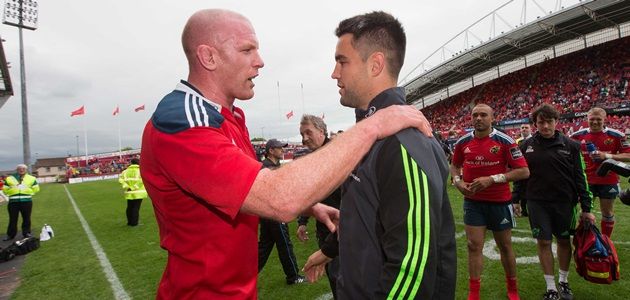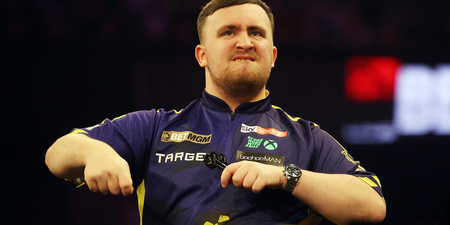A great mentor in his early years.
Conor Murray made his Munster breakthrough at the end of the 2009/10 season. He made the No.9 jersey his own by the end of the following season and was starting for Ireland at the World Cup just five months after that season concluded.
Murray has been the main man for province and country for the past eight seasons and he is in the form of his life. The successful Six Nations campaign and Munster’s Champions Cup journey has only gone to confirm the Limerick native as one of the very best in world rugby.
Murray told The Hard Yards about his early years with the Munster academy and in their elite player development system. As with most sporting success stories, there were years of hard slog and unseen work that went on behind the training ground gates.
“A massive part, for me,” he says, “was playing club rugby for Young Munster and Garryowen, and being thrown in at a young age. It’s almost sink or swim at that stage and thankfully I just about managed to stay afloat. I took an awful lot from that experience.
“My three years in the academy were absolutely massive. It’s your first time coming into a professional environment and you’re being looked at from all aspects – physically, mentally, skills-wise and if you can handle pressure. You’re really assessed properly and for a scrum-half, passing and kicking are your basics. They are always things I loved doing anyway.
“So I went into the academy and I started working with [former Scotland scrum-half] Greig Oliver, who was a scrum-half himself and a great one in his time. I learned an awful lot off him and I still work with him to this day. There were an awful lot of passing sessions but he kept it exciting and really varied it up a lot. That became part of my weekly routine.
“You probably didn’t realise the hours that you were putting into your passing game, and the same could be said for your kicking game – your extras after training.”

Murray arrived on the scene as many of Munster’s golden generation – Ronan O’Gara, Paul O’Connell, Marcus Horan and David Wallace – were in their 30s and closer to the end of their careers than the start.
The backing of legendary Munster and Ireland outhalf Ronan O’Gara is something that Murray has never forgotten.
“The biggest thing about playing with ROG,” he comments, “is that he always backed you.
“He understood the game-plan really, really well and drove the team around the place but if I tried something myself, he never really go onto me or gave out. He let me do my thing in and around the forwards but, obviously, I had to get the ball to him as quick as possible. As a nervous youngster playing with Ronan O’Gara was massive. He’d always back me to play heads-up rugby, which was great.
“The transition from club rugby to professional rugby is, mentally, such a big challenge – to be the same player and not go into your shell. When you are tossed into a big game at a sold out Thomond Park, backing yourself is such a big thing. ROG, Paulie, Donners O’Callaghan, David Wallace and all those guys who were playing when I started were all great for me when I started. They let me play my own game while obviously working within the game-plan.”
Although Murray and the next generation of stars at the province [such as Simon Zebo and Peter O’Mahony] had a great nickname for O’Gara – “Monty Burns!” – they respected him immensely.
O’Gara had quite a distinctive way of letting his young half back partner know if he had gone down the wrong path. He says:
“ROG, at times, when he needed to steer me in the right direction he made this face, this angry face. He didn’t have to say anything it was just this face. He knows well because he still does it whenever I see him.
“It just meant that I had picked the wrong option and, the next time, just give him the ball!”
That sounds like the O’Gara that so many Irish fans, and players, know so well – he’ll always have your back but just give him the ball and he’ll sort it.











































